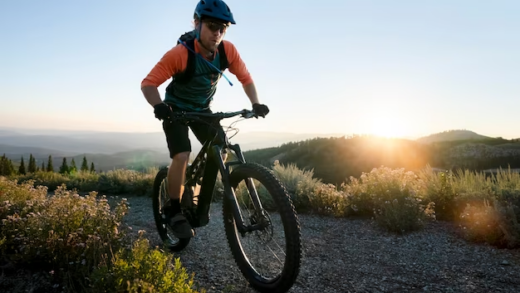As a passionate cyclist, being prepared for unexpected situations is a hallmark of a responsible rider. One invaluable skill every biker should possess is knowing how to put air in bike tires without a pump. Whether you’ve forgotten your pump at home or are looking to explore alternative inflation methods, this guide will equip you with the knowledge you need.
Methods to Inflate Bike Tires without a Pump
Maintaining proper tire pressure is essential for your safety and bike performance. If you’re stuck without a pump, here are some methods to consider:
1. Using CO2 Cartridges
CO2 cartridges provide a portable and quick solution for inflating your bike’s tires. While this method is ideal for emergencies, it’s temporary and not suitable for regular use. Follow these steps:
- Remove the cartridge cap. Turn the cap counterclockwise to remove it;
- Check your tire’s condition. Examine your tire’s condition and alignment;
- Insert the cartridge into the inflator fitting. Place the cartridge in the inflator fitting, pushing it clockwise;
- Fill the tire with air. Hold the cartridge for a few seconds to inflate the tire;
- Replace the CO2 with regular air as soon as possible. Remember, CO2 is temporary. As soon as possible, replace it with regular air using a pump.
2. Manual Inflation
Although labor-intensive, manually inflating your tire is possible when no other option is available. Clean the tire and valve, then follow these steps:
- Blow air into the tire. Gently blow air into the valve to gradually inflate the tire;
- Check tire alignment with the rim. Keep checking the tire’s alignment with the rim during inflation;
- Continue inflating the tire manually. Wipe down the tire and valve to ensure a clean seal.
3. DIY Inflating Tool
Crafting your inflating tool requires creativity. This method involves transferring air from one tire to another using a siphon hose and Schrader valves. Here’s how:
- Create a siphon hose with Schrader valves. Craft a siphon hose with Schrader valves at each end;
- Attach one end of the hose to a tire with air. Connect one end to a tire with air and the other end to the flat tire;
- Transfer air to the flat tire or use air from other bicycles. Inflate the flat tire by transferring air from the other tire.

Comparison Table of Inflation Methods
| Method | Pros | Cons |
|---|---|---|
| CO2 Cartridges | Portable, quick solution for emergencies | Temporary, not suitable for regular use |
| Manual Inflation | Possible when no other option is available | Labor-intensive |
| DIY Inflating Tool | Creative solution for transferring air | Requires DIY skills and extra equipment |
Video Guide
We suggest you watch the video, in which you will get a more detailed explanation.
Conclusion
Learning how to put air in bike tires without a pump is a practical skill for bikers. While these methods can be effective in emergencies, it’s essential to prioritize safety and regular maintenance to prevent such situations. Keeping your bike’s tires properly inflated not only ensures a smoother ride but also extends the lifespan of your tires.
FAQ
While CO2 cartridges offer convenience, they are best reserved for emergencies. Regular tire maintenance is better achieved with a proper bike pump.
Manual inflation can be effective for temporary solutions. However, it requires effort and might not provide consistent or accurate air pressure.
Creating a DIY inflating tool demands creativity and skill. It’s a unique solution for resourceful bikers, but using a pump remains the most reliable method.
Refer to your bike’s user manual or the tire’s sidewall for recommended pressure values. Optimal tire pressure varies based on factors like rider weight, terrain, and tire size.






